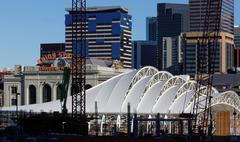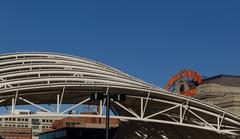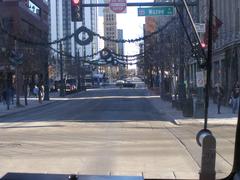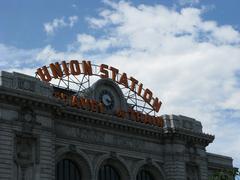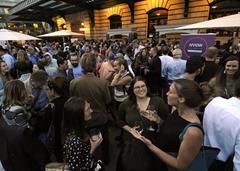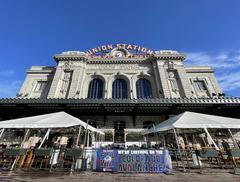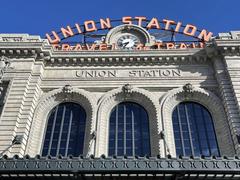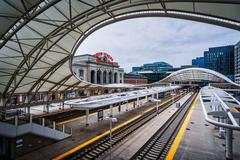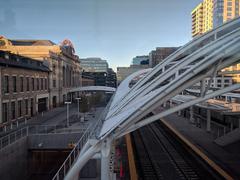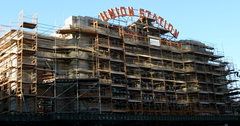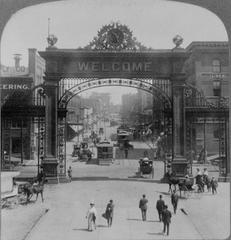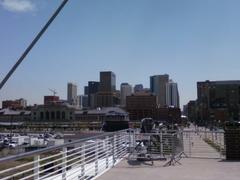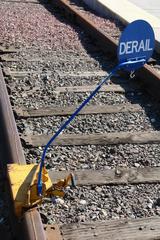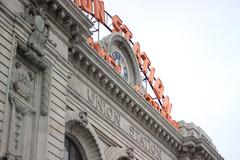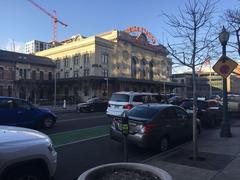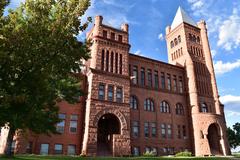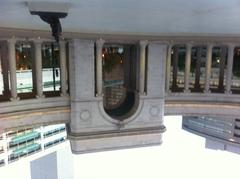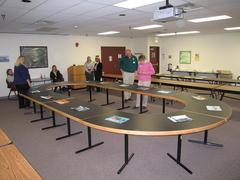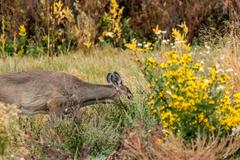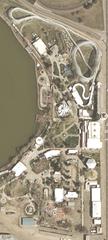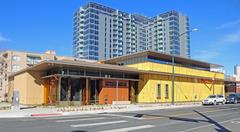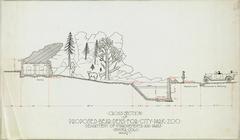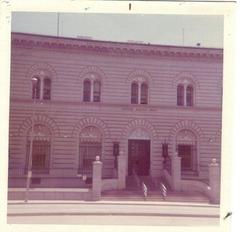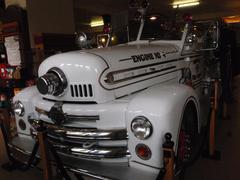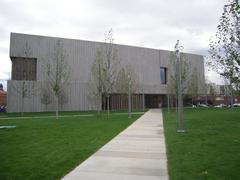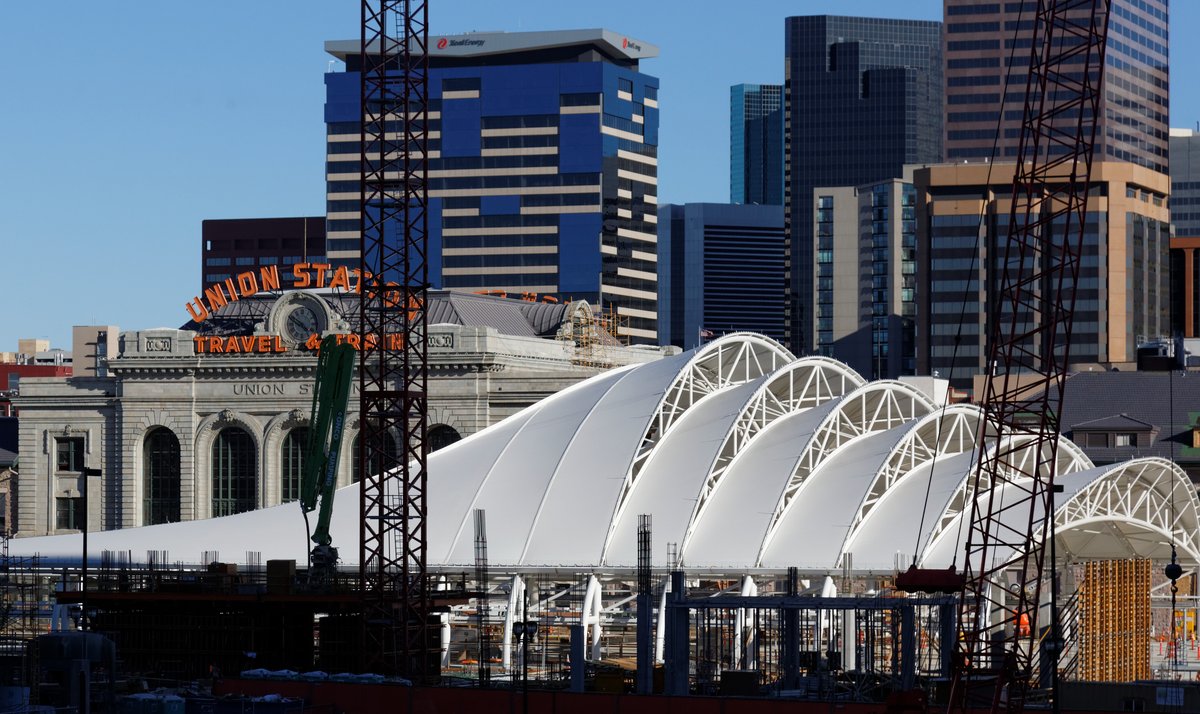
Union Station Denver Visiting Guide: Hours, Tickets, and Tips
Date: 01/08/2024
Introduction
Denver Union Station, located in the heart of Denver’s LoDo district, is a landmark steeped in rich history and modern charm. Since its initial opening in 1881, the station has played a pivotal role in the city’s development, serving as a crucial hub for supply shipments heading west and facilitating the growth and expansion of Denver and its surrounding regions (Wikipedia). The station has undergone several transformations, from its original construction to a devastating fire in 1894, followed by a grand reconstruction in 1914 in the Beaux-Arts style. This architectural masterpiece, featuring soaring ceilings and ornate detailing, stands as a testament to the city’s ability to blend historical preservation with modern innovation (Denver Union Station). Today, Union Station is not only a transportation hub but also a vibrant cultural and community center, attracting over 30,000 visitors daily with its array of dining, shopping, and entertainment options (TripSavvy). As Denver continues to grow, Union Station remains an integral part of the city’s infrastructure and cultural landscape, bridging the past and present in a uniquely captivating way.
Table of Contents
-
[Introduction](#introductionintroduction)
-
[Early Beginnings and Construction](#early-beginnings-and-constructionearly-beginnings-and-construction)
-
[The 1881 Station and Its Demise](#the-1881-station-and-its-demisethe-1881-station-and-its-demise)
-
[Rebuilding and Expansion](#rebuilding-and-expansionrebuilding-and-expansion)
-
[Peak and Decline](#peak-and-declinepeak-and-decline)
-
[Revitalization and Modern Era](#revitalization-and-modern-erarevitalization-and-modern-era)
-
[Architectural Significance](#architectural-significancearchitectural-significance)
-
[Visitor Information](#visitor-informationvisitor-information)
-
[Cultural and Community Hub](#cultural-and-community-hubcultural-and-community-hub)
-
[Notable Events and Features](#notable-events-and-featuresnotable-events-and-features)
-
[Nearby Attractions](#nearby-attractionsnearby-attractions)
-
[Future Prospects](#future-prospectsfuture-prospects)
-
[FAQ Section](#faq-sectionfaq-section)
-
[Conclusion](#conclusionconclusion)
-
[References](#referencesreferences)
Early Beginnings and Construction
Denver Union Station has a history dating back to the 19th century. The first train station in Denver was constructed in 1868 to serve the Denver Pacific Railway, which connected Denver to the main transcontinental line at Cheyenne, Wyoming. By 1875, the city had four different railroad stations, making passenger transfers cumbersome. To address this, the Union Pacific Railroad proposed a central “Union Station” to consolidate operations. The owners of the four lines—Union Pacific, Denver & Rio Grande, Denver, South Park & Pacific, and Colorado Central—agreed to build the station, and it opened in May 1881 (Wikipedia).
The 1881 Station and Its Demise
The original Denver Union Depot, spanning 500 feet and featuring a 180-foot clock tower, was the tallest building in the West at the time. However, this structure was short-lived. On March 18, 1894, an electrical fire destroyed the station, including its central hall and iconic clock tower (Denver Union Station).
Rebuilding and Expansion
The station was quickly rebuilt, but by the early 20th century, it was clear that the city had outgrown the modest structure. In 1914, a new, grander station was constructed in the Beaux-Arts style, using carved granite. This new station featured an enlarged central portion and became a significant architectural landmark (Wikipedia).
Peak and Decline
During the 1920s and 1930s, Denver Union Station was a bustling hub, with over 80 trains serving the station daily. It welcomed notable dignitaries such as Queen Marie of Romania and U.S. Presidents Theodore Roosevelt, William Howard Taft, and Franklin Delano Roosevelt. The station reached its peak during World War II, handling more than 50,000 visitors daily, including many U.S. service members and their families (Denver Union Station).
However, the latter half of the 20th century saw a sharp decline in rail traffic due to the rise of automobiles and airlines. By 1958, passenger traffic at Stapleton International Airport exceeded that of Union Station. The station gradually fell into disuse, and by the early 2000s, it was largely abandoned (Wikipedia).
Revitalization and Modern Era
Efforts to revitalize Denver Union Station began in earnest in 2001 when Denver’s Regional Transportation District (RTD) purchased the station. The vision was to transform it into a multi-transportation hub to serve residents and clean up the area. Construction of new light rail lines and service hubs began in 2010. The station house reopened in 2014 with a fresh Romanesque Revival façade, new platforms, and the 112-room Crawford Hotel (TripSavvy).
Architectural Significance
The 1914 Beaux-Arts station is an architectural gem, featuring glistening chandeliers, ornate white molding, and soaring 65-foot ceilings. The Great Hall, the station’s centerpiece, is a sweeping room full of elegance and nostalgia. Enormous arched windows flood the room with sunlight, creating a welcoming atmosphere for visitors (Colorado.com).
Visitor Information
- Visiting Hours: Denver Union Station is open 24 hours a day, with shops and restaurants having varied opening times.
- Tickets: While entry to the station is free, tickets for guided tours and events can be purchased on the official website.
- Accessibility: The station is fully accessible, featuring ramps, elevators, and accessible restrooms.
Cultural and Community Hub
Today, Denver Union Station is more than just a transportation hub; it is a vibrant gathering place and cultural destination. The station hosts a variety of events, including live music, local festivals, farmers’ markets, and fitness classes. It also features a range of dining options, from chef-owned restaurants to casual eateries, and boutique shops (Denver Union Station).
Notable Events and Features
Union Station has become a must-see destination in Denver. It offers a unique blend of history and modern amenities, making it a popular spot for both locals and tourists. The station’s public art collection, featuring works from local artists, adds to its cultural appeal. Additionally, the station’s urban beekeeping program and farmers’ market provide fresh, local produce and honey, enhancing the community’s connection to the space (Denver.org).
Nearby Attractions
- Coors Field: Home of the Colorado Rockies, just a 10-minute walk from Union Station.
- 16th Street Mall: A pedestrian-friendly shopping and dining area nearby.
- Museum of Contemporary Art Denver: Located just a short walk from the station.
Future Prospects
As Denver continues to grow, Union Station remains a key part of the city’s infrastructure and cultural landscape. The station’s ongoing development and revitalization efforts ensure that it will continue to serve as a gateway to the Mile High City for years to come. The upcoming “Union Station Making History… Again Gala” on July 13, 2024, will celebrate the 10th anniversary of the station’s revitalization, highlighting its significance to the local community (Denver Architecture Foundation).
FAQ Section
- What are the visiting hours for Denver Union Station? Denver Union Station is open 24 hours a day, though individual shop and restaurant hours may vary.
- How much are tickets for Denver Union Station tours? Ticket prices vary depending on the tour. Visit the official website for current pricing and availability.
Conclusion
Denver Union Station embodies the perfect blend of historical significance and modern amenities, making it a must-visit destination for both locals and tourists. From its early beginnings in the 19th century to its revitalization in the 21st century, the station has continually evolved to meet the needs of its visitors while preserving its architectural grandeur and cultural importance. Today, Union Station serves as a bustling transportation hub and a vibrant community gathering place, hosting a variety of events and offering an array of dining and shopping options. Its strategic location in downtown Denver, coupled with easy accessibility via public transportation, makes it an ideal starting point for exploring the city. As we look to the future, Union Station’s ongoing development and community engagement initiatives ensure that it will continue to be a cornerstone of Denver’s urban landscape for years to come (Denver.org, Denver Architecture Foundation). Whether you’re a history buff, architecture enthusiast, or simply looking for a unique experience, Denver Union Station offers something for everyone.
References
- Wikipedia. (n.d.). Denver Union Station. Retrieved from Wikipedia
- Denver Union Station. (n.d.). Our History. Retrieved from Denver Union Station
- TripSavvy. (n.d.). Denver Union Station. Retrieved from TripSavvy
- Denver.org. (n.d.). Union Station. Retrieved from Denver.org
- Denver Architecture Foundation. (n.d.). Union Station Making History… Again Gala. Retrieved from Denver Architecture Foundation
